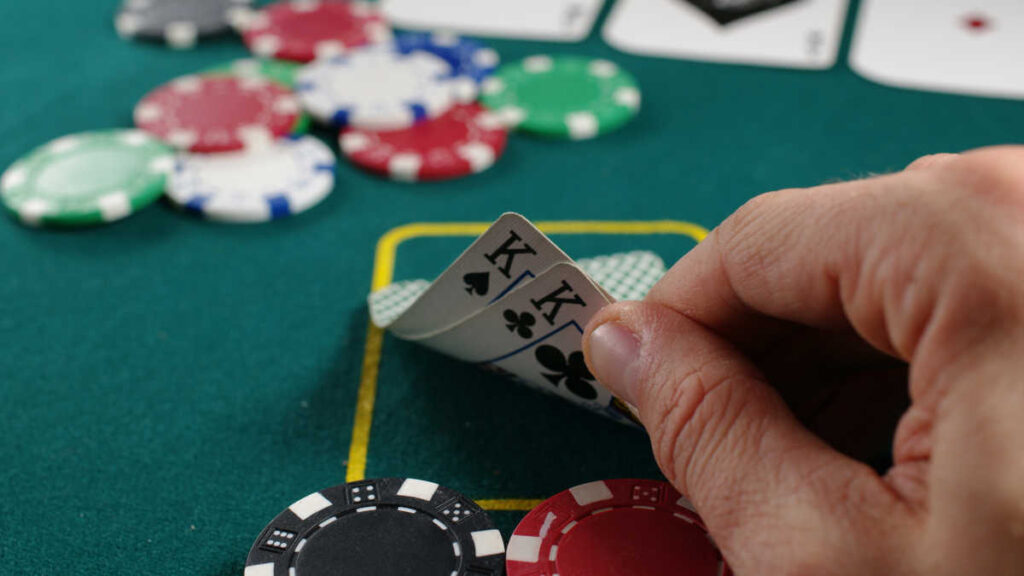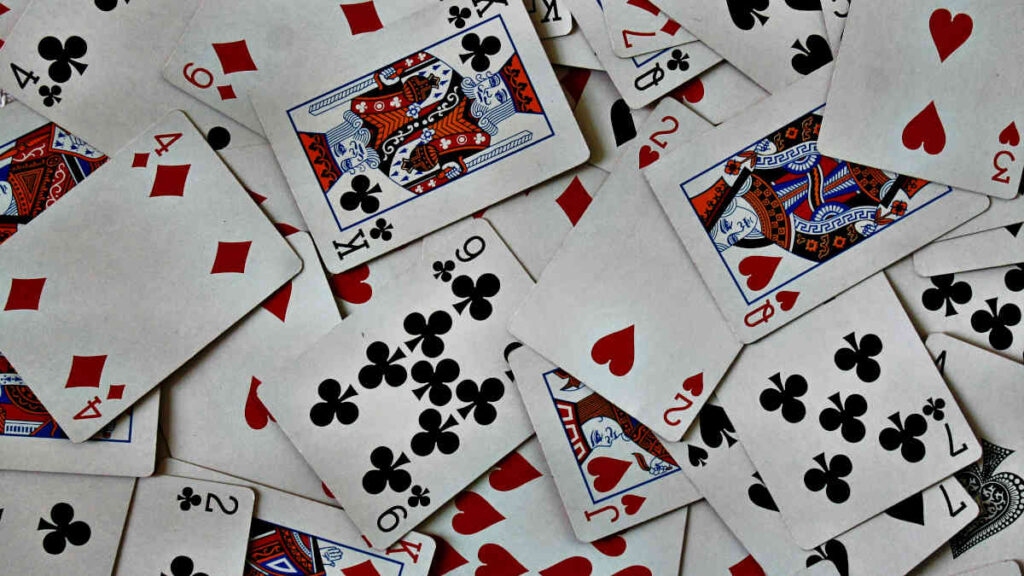Card counting is a popular technique that card players use to gain an edge over the house in some games, but can you count cards in poker?
This is a question often asked by inexperienced poker players and card laymen who don’t understand the concept or techniques of card counting.
In this article, we explore card counting in poker, compare it to card counting in other games like blackjack and baccarat, and try to get to the bottom of the issue.
What Is Card Counting?
Before we can discuss card counting in poker, we have to explain what it is in the first place and how it works in other card games.
Card counting is a technique that involves, quite literally, counting the cards that have been dealt in order to gain a theoretical edge.
The technique is mostly used in the game of blackjack, where cards are dealt face-up, and the deck is not shuffled after every deal.
By counting the number of high cards and low cards that have been dealt, savvy players can alter their strategy and gain an edge over the house.
This technique allows the player to turn the tables on the house and go from a slight underdog to a quite significant favorite when they apply the strategy correctly.
While this is mostly live, you can play around with card counting online as well, just make sure you play on a safe site if you do it. For example, you can play safely using Ezeewallet at Australian casinos or other destinations around the world.
Some card counting strategies have also been applied to baccarat, although such a strategy takes a lot of effort and generally has very little impact on the overall results.
Traditional Card Counting in Poker
Applying the traditional card counting techniques to games like Texas Hold’em Poker and Pot Limit Omaha is impossible, as very few cards are shown face-up, and the deck is shuffled after every hand.
In order to be able to count cards, you have to see a lot of cards and account for them being dealt out of the deck.
In most poker games, the only cards you get to see are the ones in your hand, and the ones on the board, which are visible to everyone.
Since this is the case, there is no legitimate way to know what the other cards remaining in the deck are, or what cards have already been dealt to other players and folded.
For example, if you find yourself holding a flush draw on the flop, you know there are nine cards that can help you. Whether those cards are still in the deck or not, is impossible to know.
Counting Outs in Texas Hold’em Poker

Instead of counting the cards that have already been dealt out of the deck, like you would in blackjack, in poker you can count the cards that can improve your hand. These cards are typically called “outs.”
An out is any card that improves your current hand to a better hand on the flop, turn, or river. For example, if you have A♠K♠ on a flop of J♠7♠2♣, you can count the number of cards that will improve your hand to a flush.
In this case, there are nine remaining spades in the deck that will give you the flush if they are dealt on the turn or the river.
In this particular scenario, you can also count the three remaining Aces and the three remaining Kings as your outs, as these cards have the potential to give you top pair if they are dealt.
Counting outs is one of the most basic strategies professional poker players use to ascertain the value of their hand and decide if they want to call bets, place raises, or fold their cards.
Calculating Equity Based on Counting Outs
You may be wondering what the value of counting your outs is, so let’s explain it. In the simplest terms, knowing how many outs you have tells you exactly what your chances of improving are.
Once a flop is dealt in a Texas Hold’em hand, you have seen a total of five cards (two hole cards + three community cards). There are 47 cards remaining in the deck, and two more cards will be dealt (the turn and the river).
If you can count the number of outs you have correctly, you can quickly determine the odds of one of those cards being dealt on the turn or the river.
In our previous example, we counted nine outs to a flush. That means there is a 9/47 chance of a flush card being dealt on the turn, and a 9/46 chance of it being dealt on the river.
In total, this is 18/46.5, which adds up to 0.387, or 38.7% chance of making the flush on the turn or the river. If you run this scenario through a poker odds calculator, you will see the number closely corresponds this simple calculation.
A simple way to calculate your odds based on the number of outs you have is to multiply your outs by 4 if you are on the flop, or multiply them by 2 if you are on the turn, and the number you get will be very close to the exact odds.
Counting Cards in Pot Limit Omaha (PLO)

Pot Limit Omaha is another interesting poker game where counting cards can help you in quite a few ways. Once again, traditional card counting won’t work, as there are very few cards that are dealt face-up.
Yet, there is a bit of a difference when it comes to card counting in NLH and PLO. For one, the two extra hole cards you get can reveal some additional information.
For example, if you hold a hand with four cards of the same suit, and two more are dealt on the board, you only have seven outs to make a flush, instead of the usual nine.
Another interesting concept related to card counting that’s very important in PLO are “blockers.” Blockers are cards that you hold that prevent your opponent from having certain hands.
For example, imagine holding A♠K♦K♣9♥ on a flop of Q♠7♠2♠. There are three spades on the board, and you only have one spade, which means you can’t have a flush, as PLO requires you to use two hole cards to make your hand.
However, holding the A♠ in your hand means your opponents can’t possibly have the best hand, the A-high flush. If you place multiple big bets or raises, you may be able to force them to fold even strong hands like lower flushes.
Blockers are a key strategic element in PLO, and professional players use them to push their opponents out of pots and win regularly.
Counting Cards in Seven Card Stud
One poker game where a more traditional approach to card counting actually works is Seven Card Stud. In this poker game, each player is dealt a series of hole cards, with many of them dealt face-up.
To start off, each player is dealt two cards face-down, and one card face–up. Players often fold their hands in the first betting round, but the information you gain from seeing their up-cards can be valuable.
For starters, it can give you some idea of your own outs, as cards you need to improve your hand are sometimes shown and folded on the third street.
As further cards are dealt, you can gain additional information, as every new card is a piece of the puzzle, helping you figure out what your opponents can and can’t have, and what cards are still left in the deck.
One good example is when you start with three suited cards, and no cards of that suit are shown by other players. In such a case, your odds of making the flush by seventh street improve, as there is more of a chance that all remaining cards are still in the deck.
Is Card Counting in Poker Legal?
Card counting is legal in any game out there, including blackjack. While some casinos ban blackjack card counters from playing the game, there is no legal threat to players who count cards.
When it comes to card counting in poker, it is not only legal but an essential part of poker strategy. As we already described, the way card counting works in poker is much different to the way it works in blackjack, but it is perfectly legal.
If you want to be a successful poker player, you will need to learn how to count your outs, calculate your equity based on them, and account for blockers and any other cards that impact the action on a regular basis.


